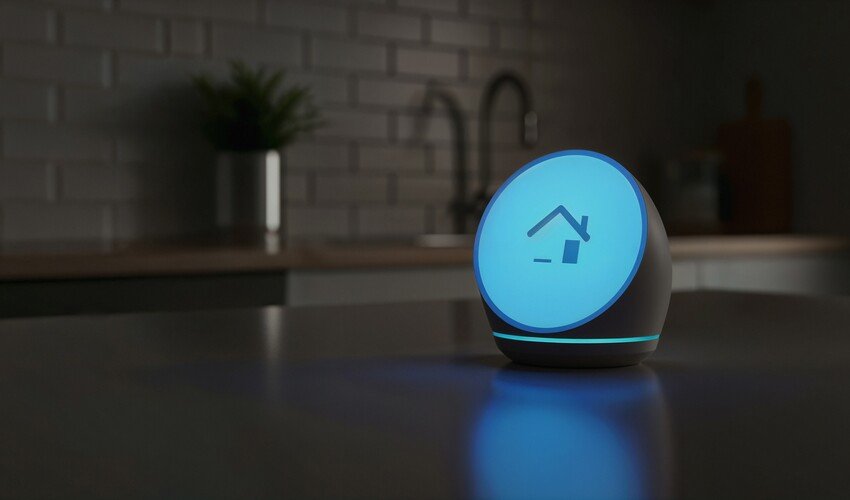Smart homes are changing the way we live. From lights to locks, everything can now work automatically. This change is not just about smart devices. It’s about how they work together, silently and smoothly. This is called Ambient Invisible Intelligence. It means technology blends into our homes without being noticed. Devices work in the background without needing commands. In this article, we will explore how this smart shift is rising fast in 2025.
What Is Ambient Invisible Intelligence?
Ambient means “all around us.” Invisible means “hidden from sight.” Intelligence means “smart decision-making.” Put together, Ambient Invisible Intelligence is smart tech that works silently around us. It senses, learns, and acts without needing direct input. You don’t see it, but it helps you every day. For example, a smart light turns on when you enter. It turns off when you leave. You didn’t touch anything. It just knew. That’s ambient invisible intelligence in action.
1. Smarter Sensors Everywhere
Sensors are now in lights, doors, and even furniture. They track motion, temperature, and sound. In 2025, these sensors will be faster and smaller. They gather more data while using less energy. This helps the system understand your daily habits. It learns when you wake, sleep, or cook. Then it adjusts the home to your routine.
2. Voice Assistants Are Evolving
We all know Alexa, Siri, and Google Assistant. But now, they do more than answer questions. They can now speak less and act more. For example, they may turn down the TV when your phone rings. They can also learn your tone. If you sound sad, they might play relaxing music. This is no longer just smart—it’s sensitive.
3. Learning Without Commands
Old smart devices needed manual input. You had to set times or give voice orders. With ambient intelligence, the home learns over time. You don’t need to say, “Turn off the lights.” The system knows when you sleep. It switches off all the lights and locks the doors quietly. This helps you live a safer, smoother life.
4. Energy Efficiency Gets Better
Smart homes now save more energy. Devices turn off when not needed. Ambient systems adjust cooling or heating based on your location. If no one is home, energy use drops. This lowers your bills and helps the planet. In 2025, green homes will use ambient tech as a key part of design.
5. More Security, Less Effort
Home safety now includes face and voice recognition. These tools work quietly and fast. When you walk to your door, it unlocks for you. It stays locked for strangers. Cameras can now detect unknown faces or strange movements. They alert you without delay. You stay safe, and the system does all the work.
6. Health Monitoring at Home
Ambient tech now helps with health, too. Smart watches and beds track sleep and heart rate. In 2025, your home can check air quality and mood levels. If it senses stress, it can dim lights or play calming sounds. For older adults, the home can alert doctors if something is wrong.
7. No Screens, No Buttons
We are moving beyond screens and switches. Ambient systems need less touching and tapping. Everything works with sensors and silent signals. The home reacts without asking. For example, lights follow your path. Music fades in when you enter. You don’t need apps or remotes. The experience feels natural and smooth.
8. Personalized Experience for Everyone
Each person in the house has unique habits. Ambient systems adjust for each user. A child’s room may have lower light and volume. A parent’s room may have work reminders. The system knows who is where and what they need. This makes the home more helpful for every family member.
9. Connected Ecosystems
In 2025, smart homes will be more connected than ever. Devices talk to each other across rooms and platforms. Your fridge tells your phone when milk is low. Your calendar tells the lights when a meeting starts. This network of smart things works as one. That’s the power of Ambient Invisible Intelligence.
10. Privacy Still Matters
As homes get smarter, people worry about privacy. Who sees the data? How is it stored? In 2025, many smart systems will include strong security features. Data stays local and encrypted. Users can choose what data to share or keep. Tech should serve people, not watch them. Privacy and trust are key to making ambient intelligence safe.
Real-Life Example
Imagine a smart home in 2025. It’s morning. The blinds open slowly at sunrise. Soft music plays in your room. Your coffee starts brewing in the kitchen. The bathroom warms to your preferred temperature. You didn’t touch anything. It all just happened. This is Ambient Invisible Intelligence at work. Now imagine an elderly person living alone. The system tracks movements and health signs. If something goes wrong, family or doctors are alerted right away. These examples show how ambient systems support comfort, safety, and health.
Benefits of Ambient Invisible Intelligence
- Saves time and effort
- Reduces energy use
- Improves home safety
- Supports health and wellness
- Offers a more natural user experience
Challenges Still Exist
- High cost of setup
- Risk of technical failure
- Privacy and security concerns
- Need for constant updates
Still, with careful planning, these issues can be managed.
Final Thoughts
Smart homes are not just full of gadgets anymore. They are becoming living spaces that know and care. Ambient Invisible Intelligence is the next big step in smart living. It blends into daily life. It works silently, but powerfully. In 2025 and beyond, more homes will use this tech. It makes life easier, safer, and more personal. The future is not just smart. It’s invisible, ambient, and intelligent.



